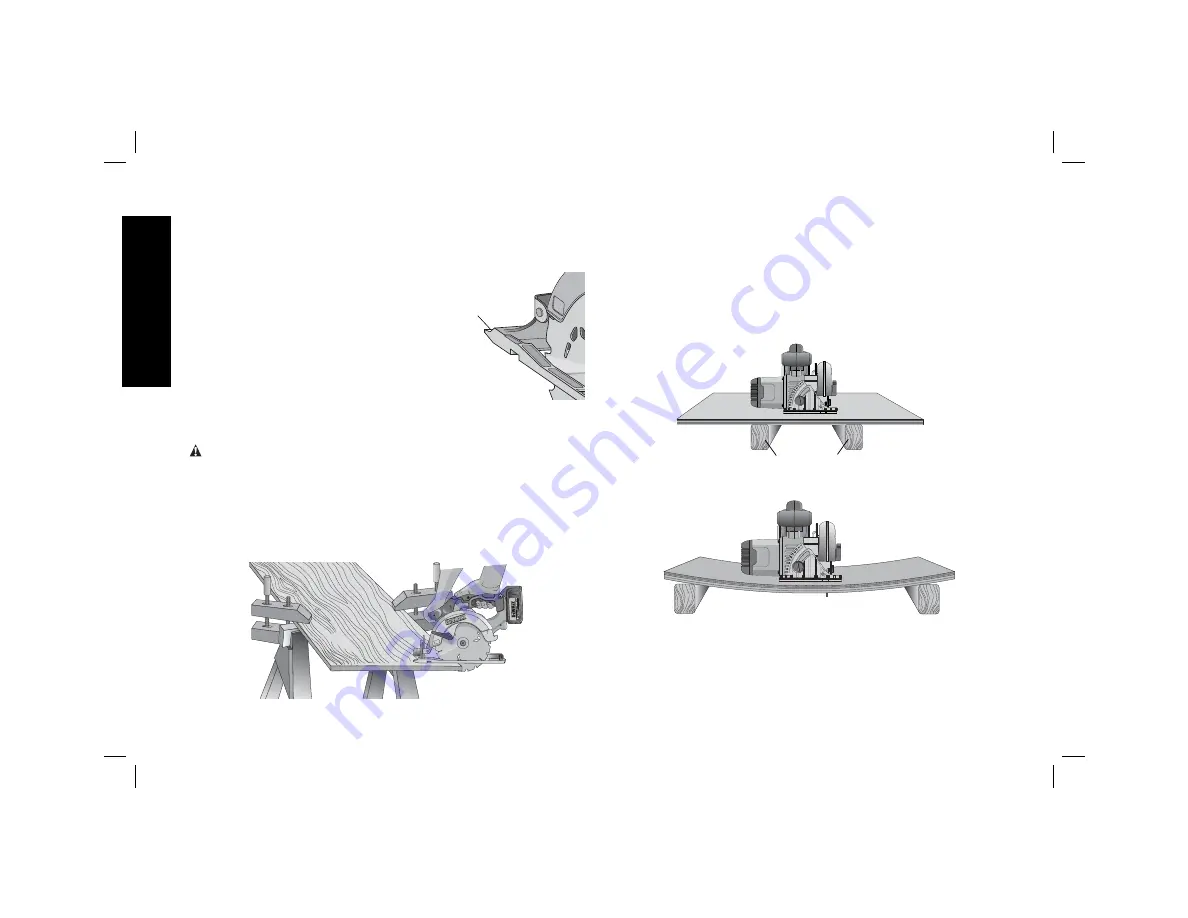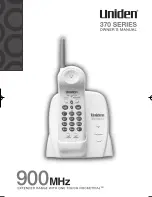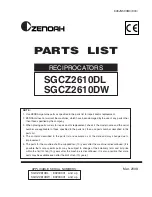
16
English
5. Confirm the accuracy of the setting by checking the squareness of
an actual cut on a scrap piece of material.
Kerf Indicator (Fig. 9)
The front of the saw shoe has a kerf indicator (I)
I
FIG. 9
for vertical and bevel cutting. This indicator
enables you to guide the saw along cutting
lines penciled on the material being cut. The
kerf indicator lines up with the left (outer) side of
the saw blade, which makes the slot or “kerf”
cut by the moving blade fall to the right of the
indicator. Guide along the penciled cutting line
so that the kerf falls into the waste or surplus
material.
Workpiece Support (Fig. 10–12)
WARNING:
It is important to support the work properly and to
hold the saw firmly to prevent loss of control which could cause
personal injury. Figure 10 illustrates proper hand support of the saw.
Maintain a firm grip with both hands on the saw and position your
body and arm to allow you to resist kickback if it occurs. ALWAYS
TURN OFF TOOL AND REMOVE BATTERY BEFORE MAKING ANY
ADJUSTMENTS!
FIG. 10
Figure 10 shows proper sawing position. Note that hands are kept away
from cutting area.
To avoid kickback
, DO support board or panel
NEAR the cut (Fig. 11). DON’T support board or panel away from the
cut (Fig. 12).
Place the work with its “good” side – the one on which appearance is
most important – down. The saw cuts upward, so any splintering will
be on the work face that is up when you cut it.
SUPPORT
DO support board or panel NEAR the cut.
FIG. 11
DON’T support board or panel AWAY from the cut.
FIG. 12
Cutting (Fig. 10)
Place the wider portion of the saw shoe on that part of the workpiece
which is solidly supported, not on the section that will fall off when the
cut is made. As an example, Figure 10 illustrates the RIGHT way to
cut off the end of a board. Always clamp work. Don’t try to hold short




































